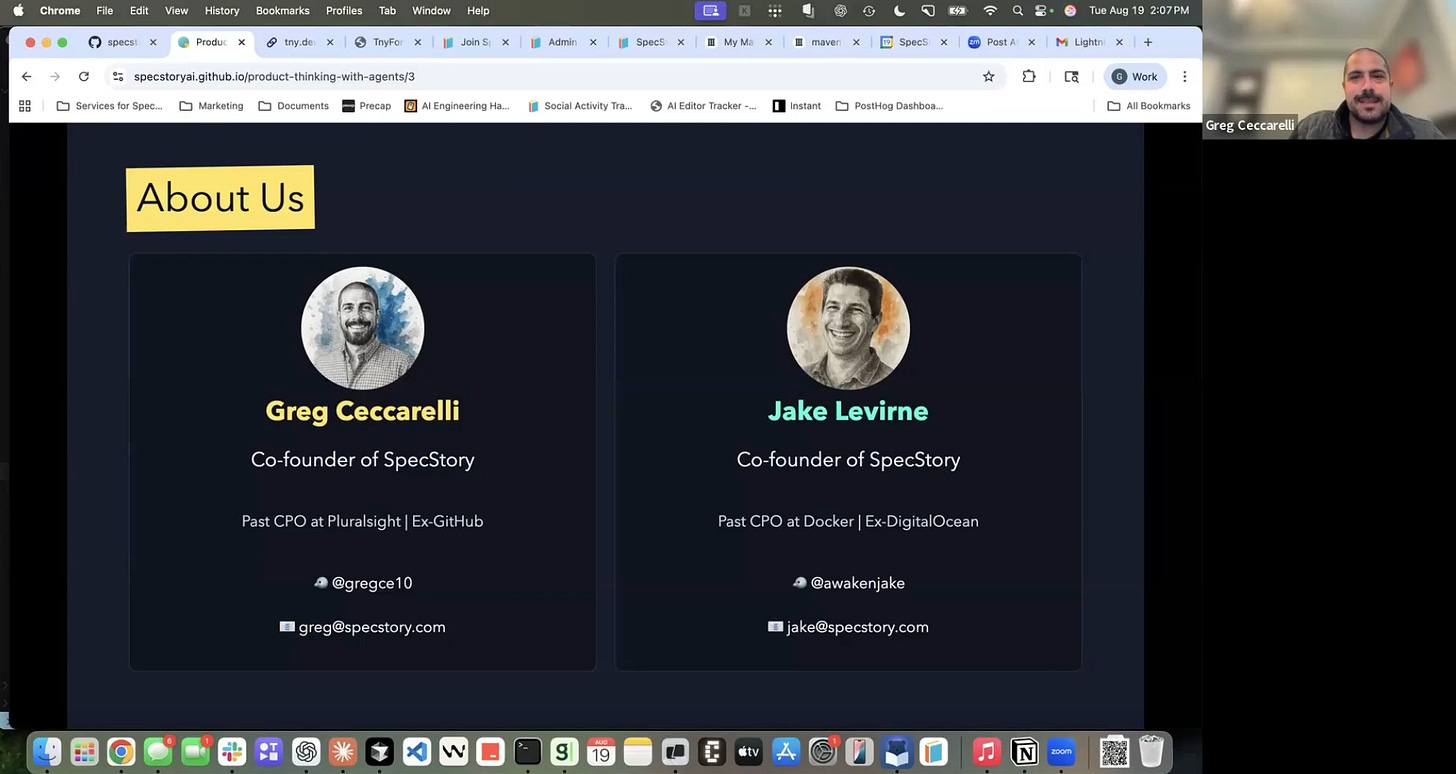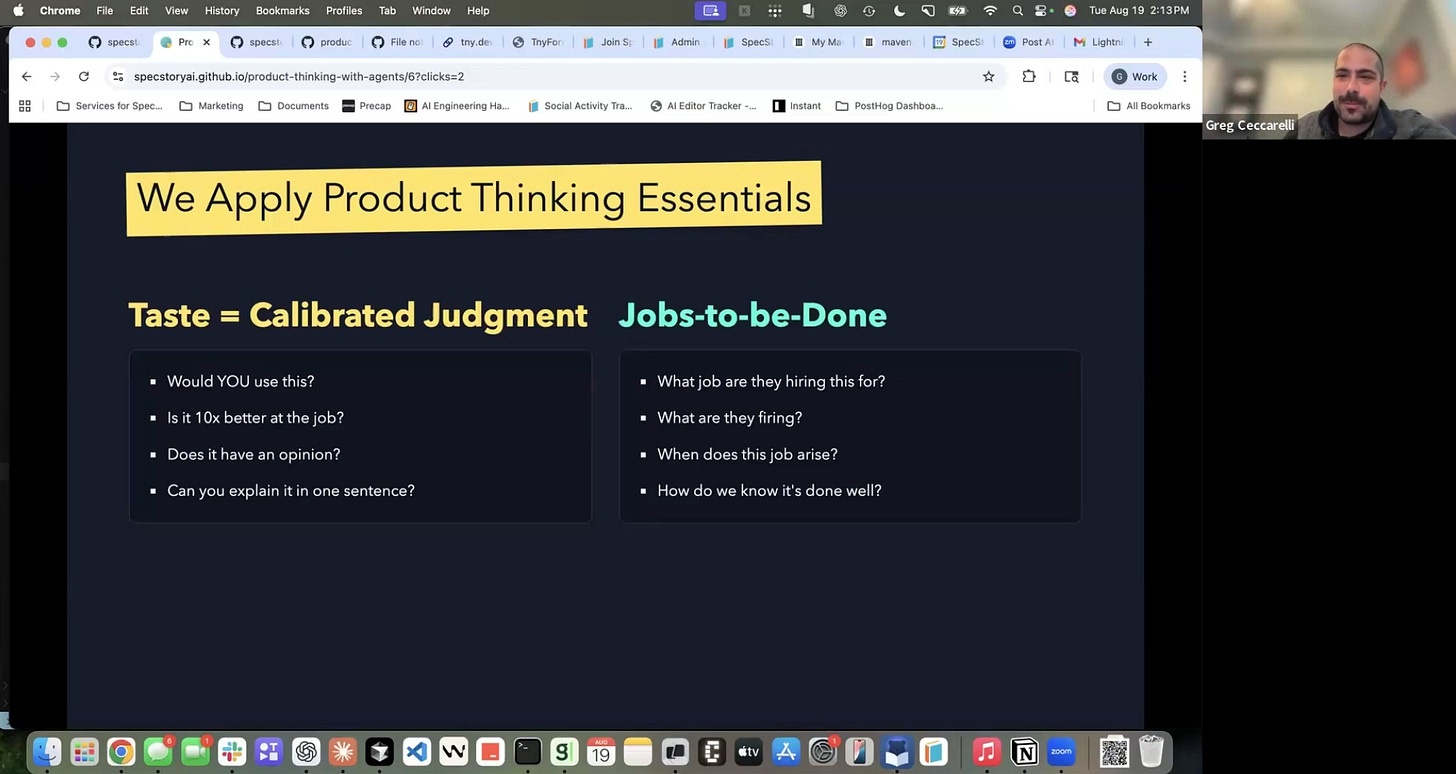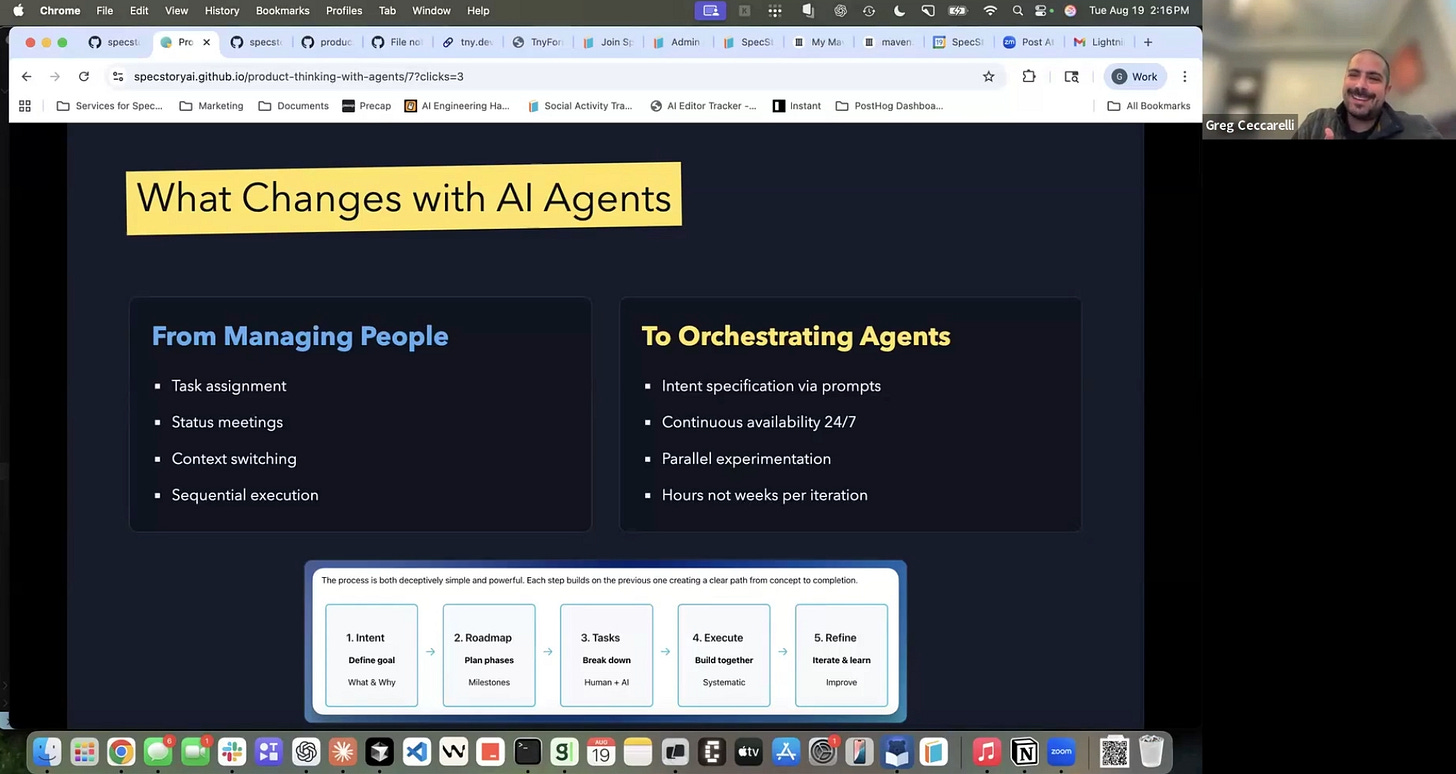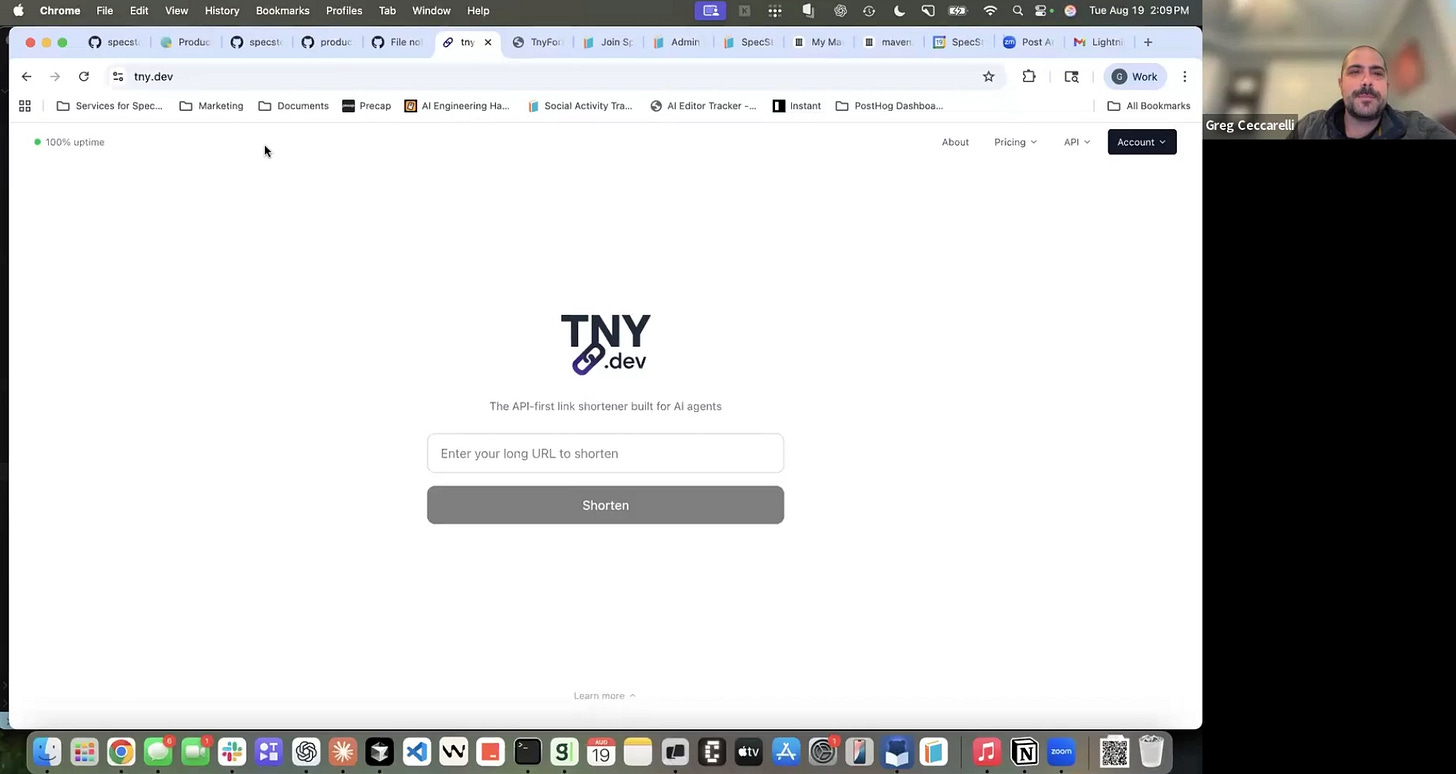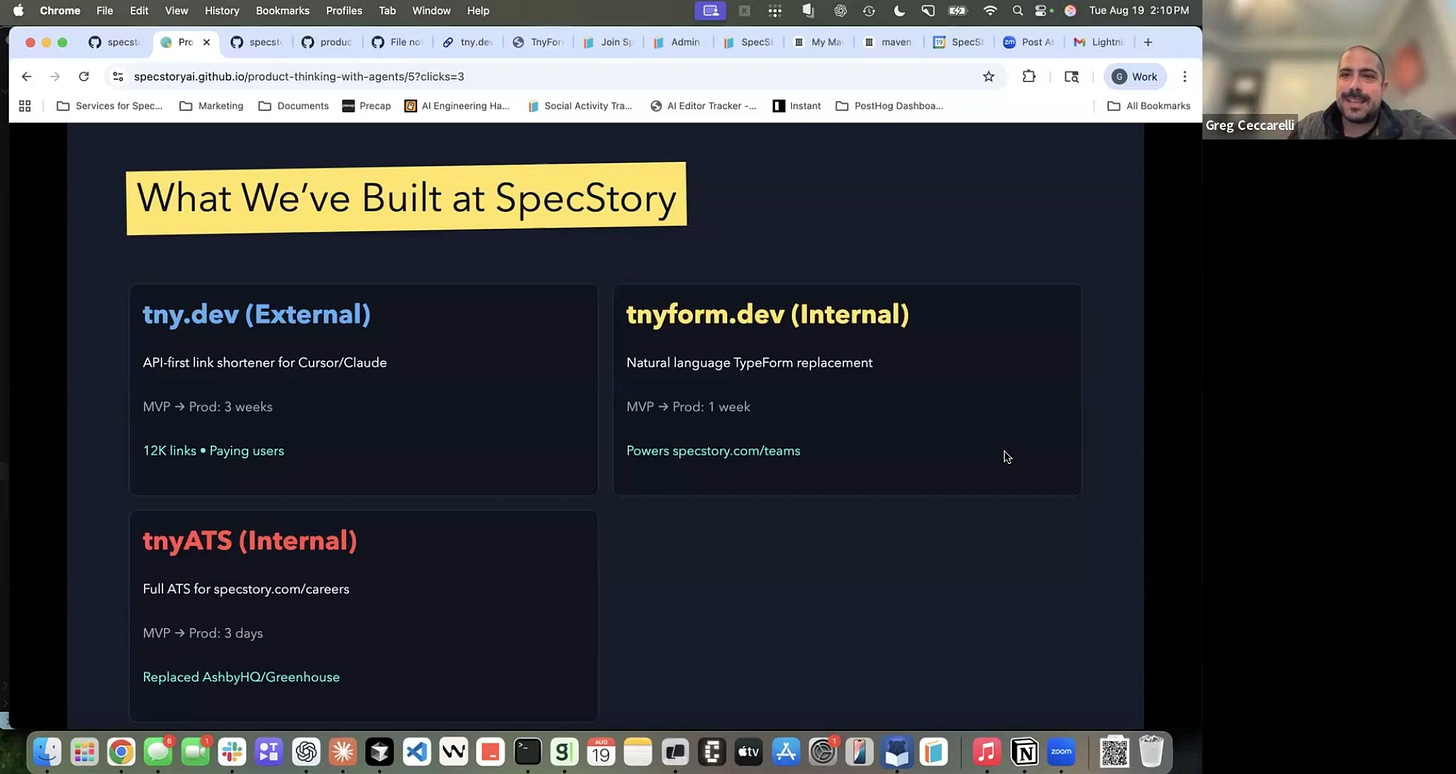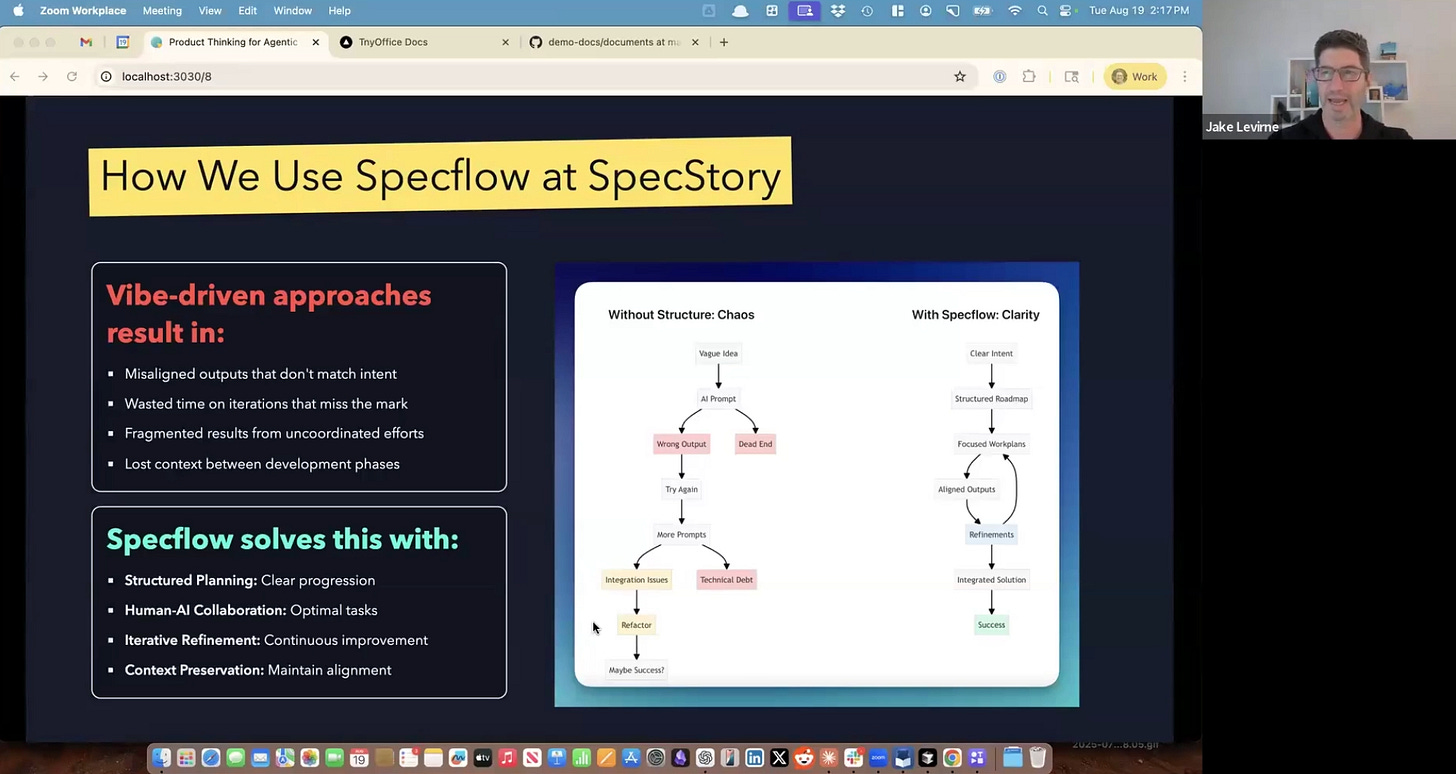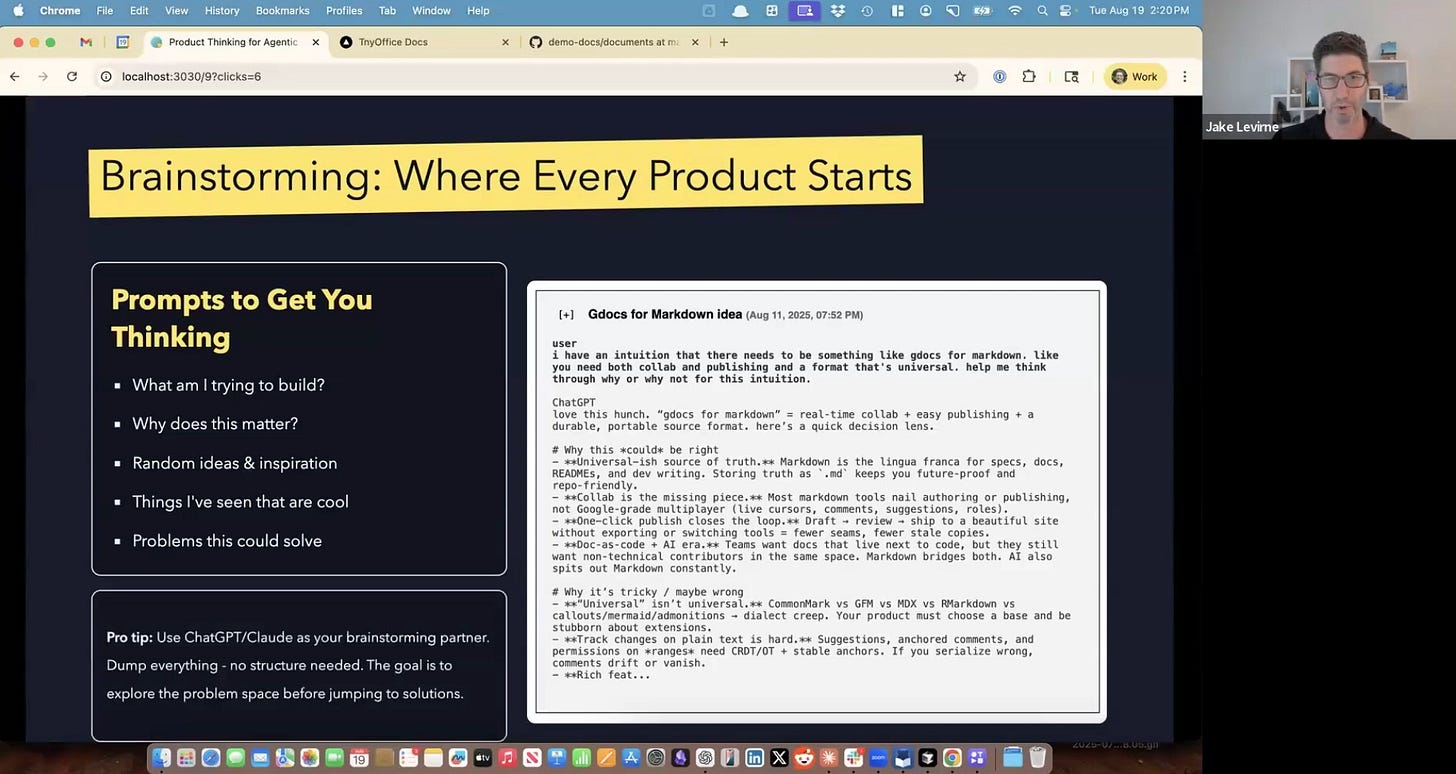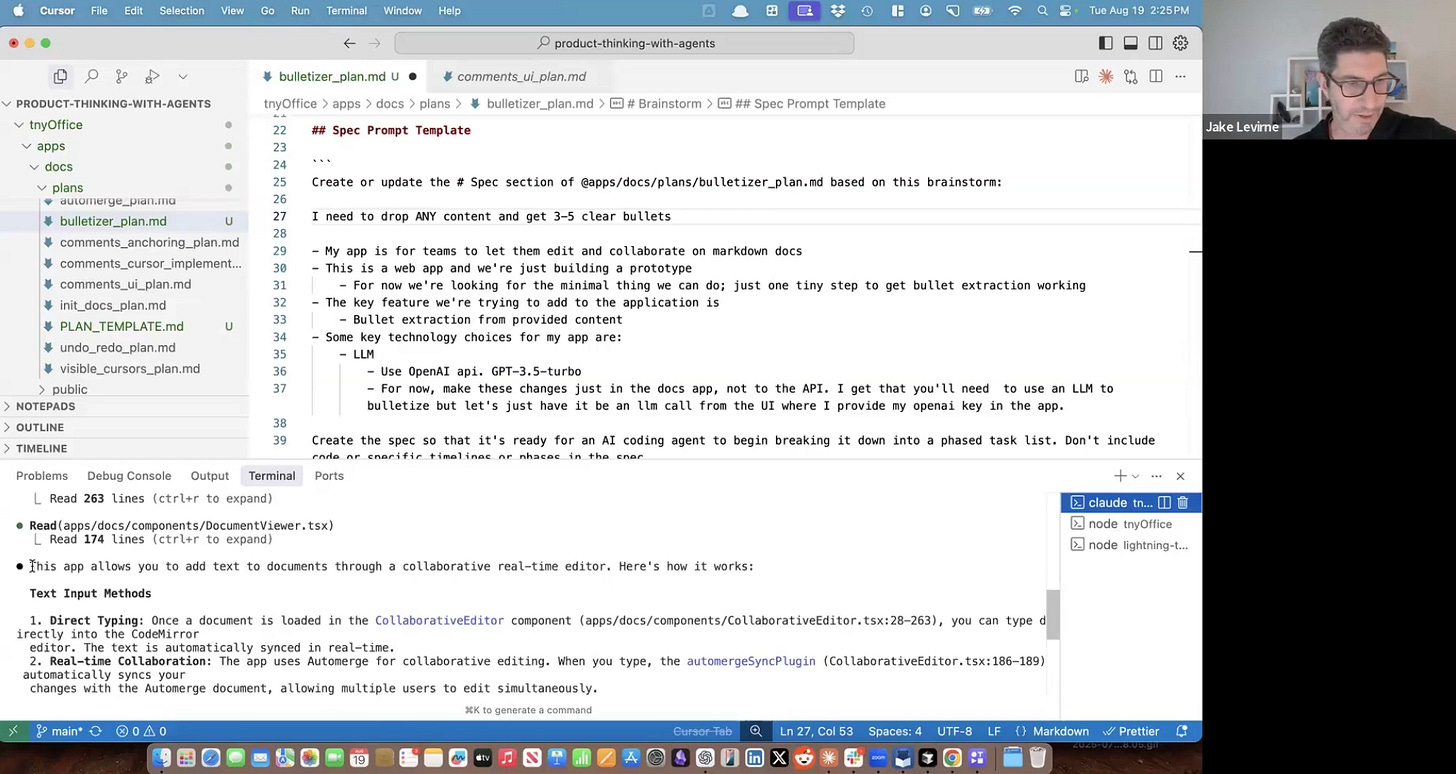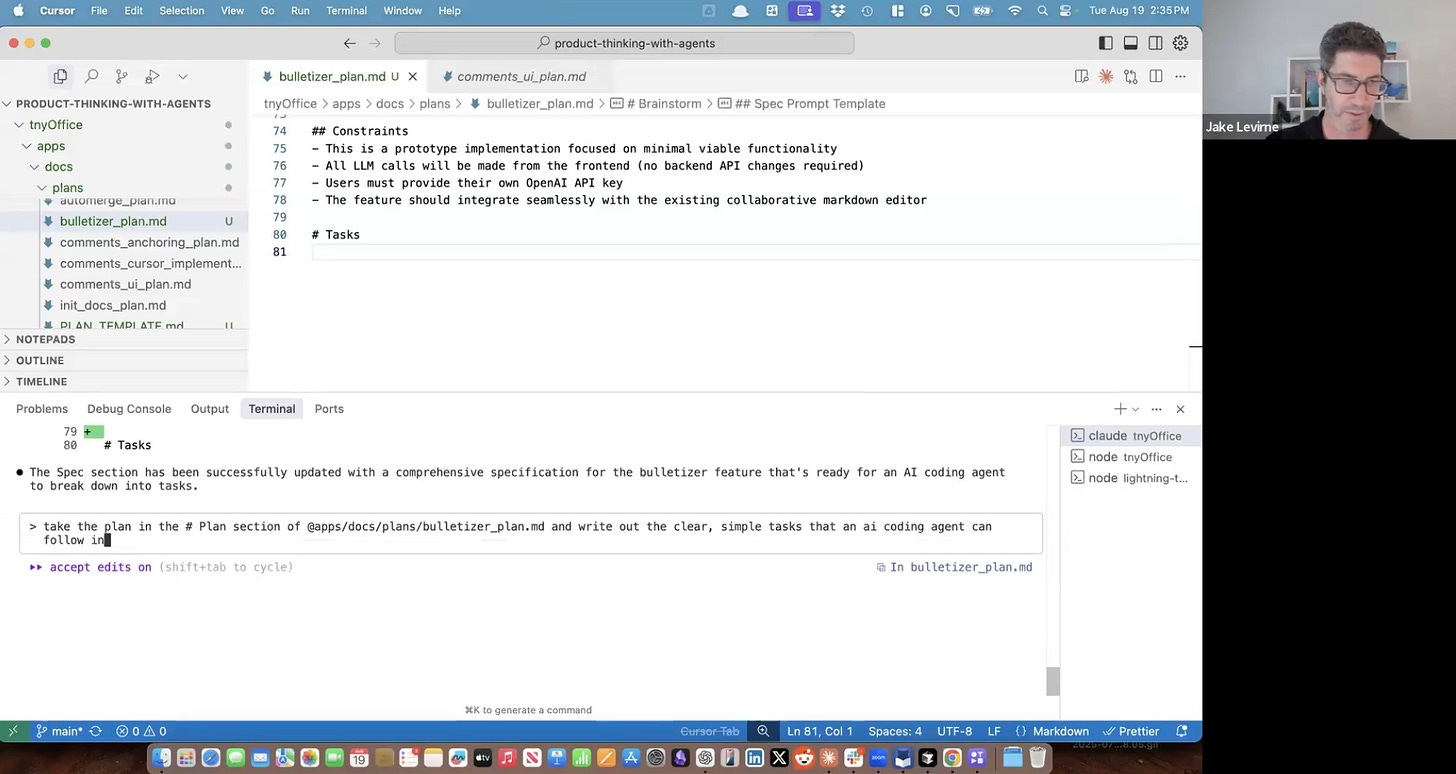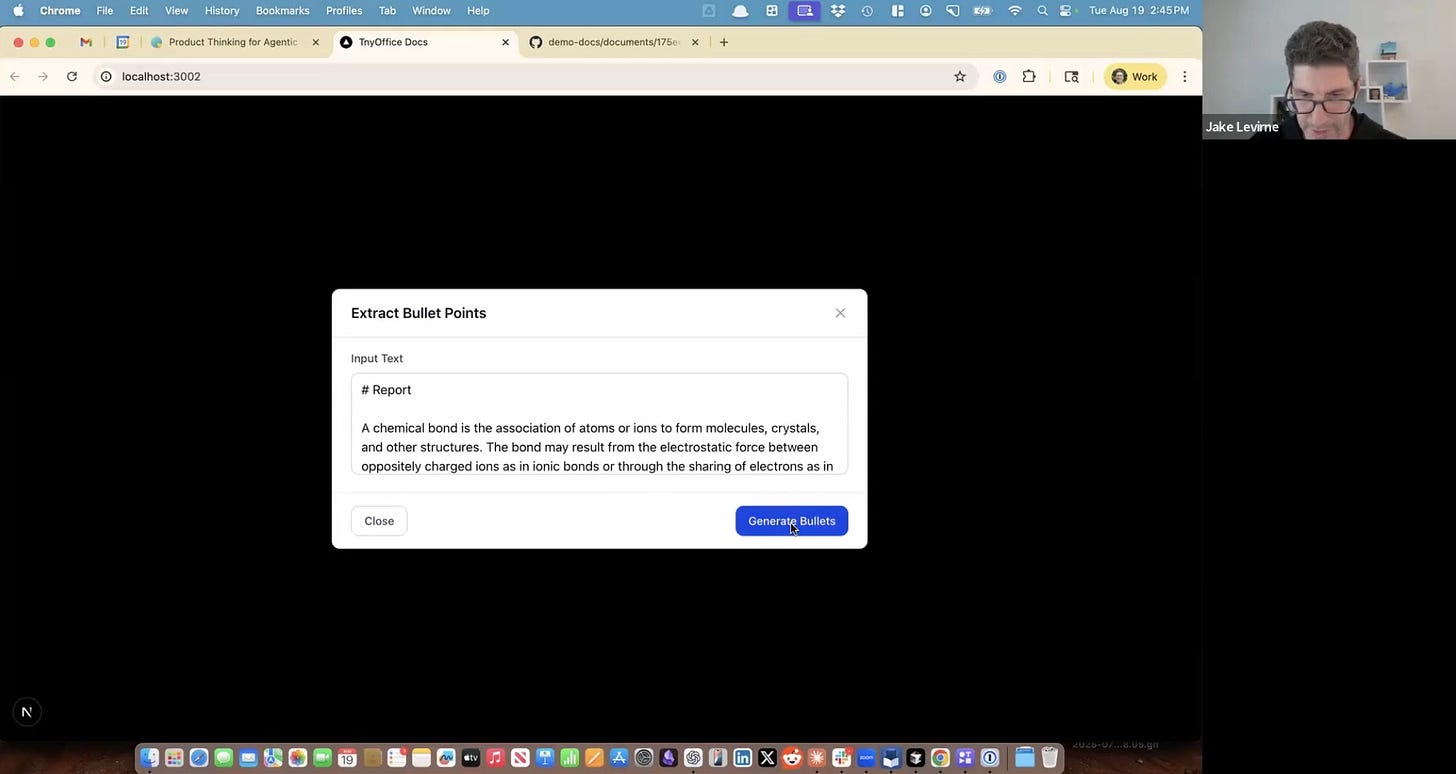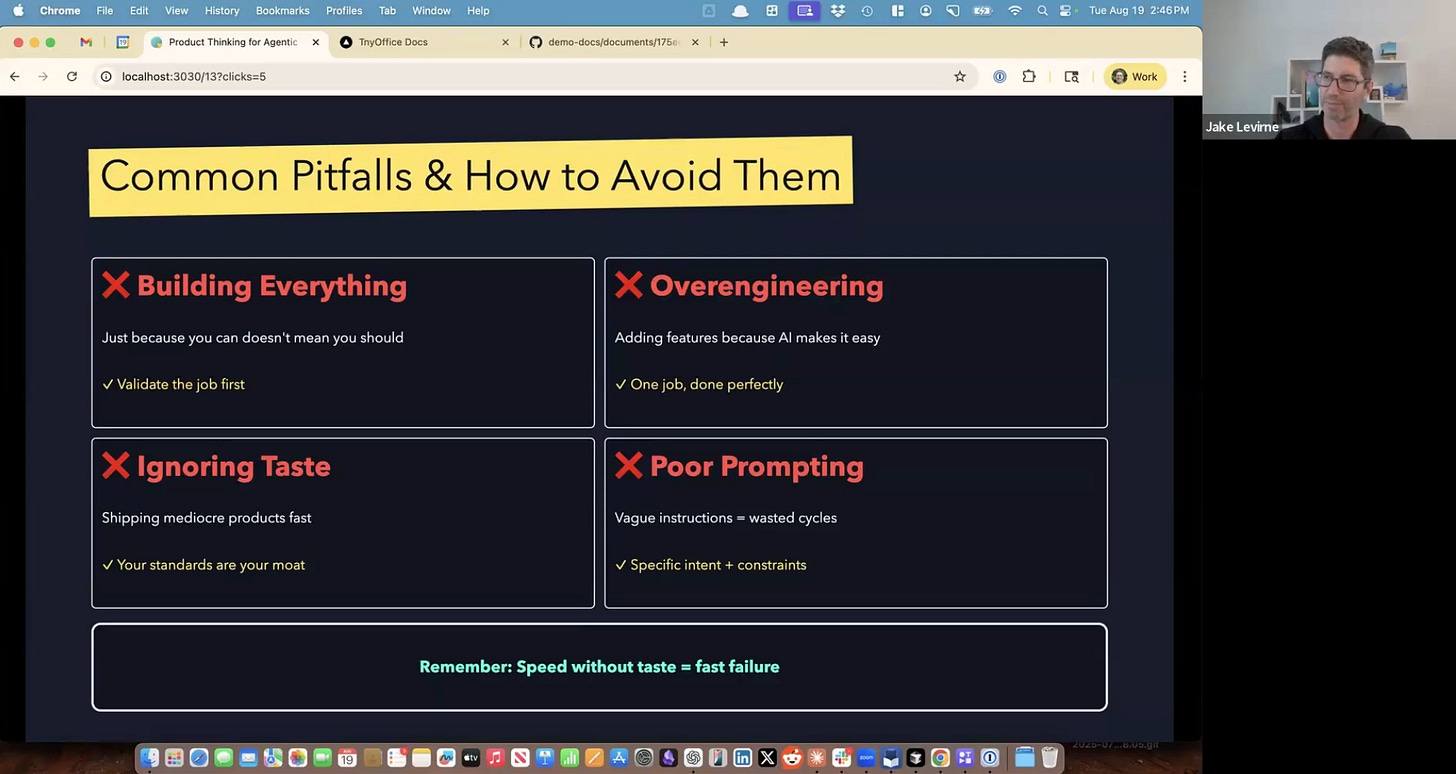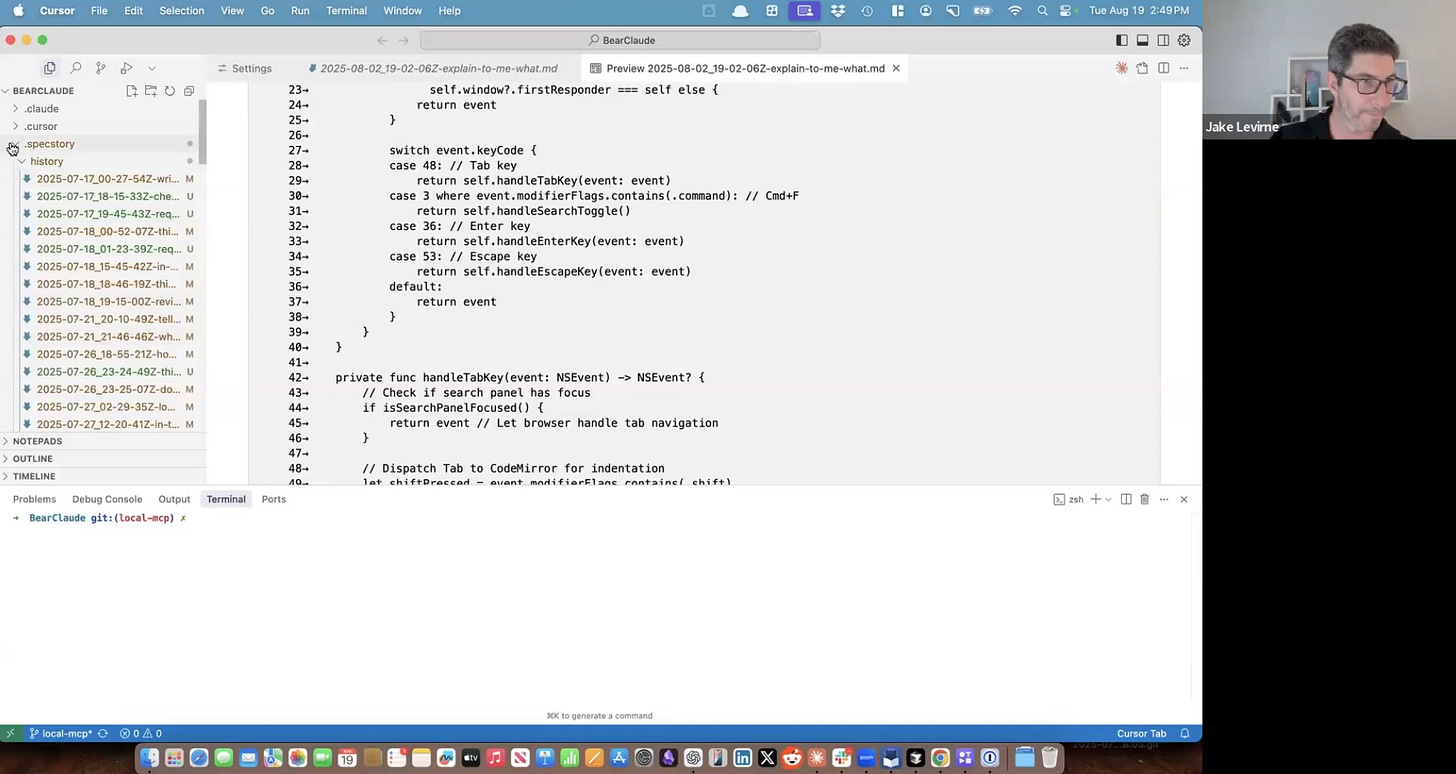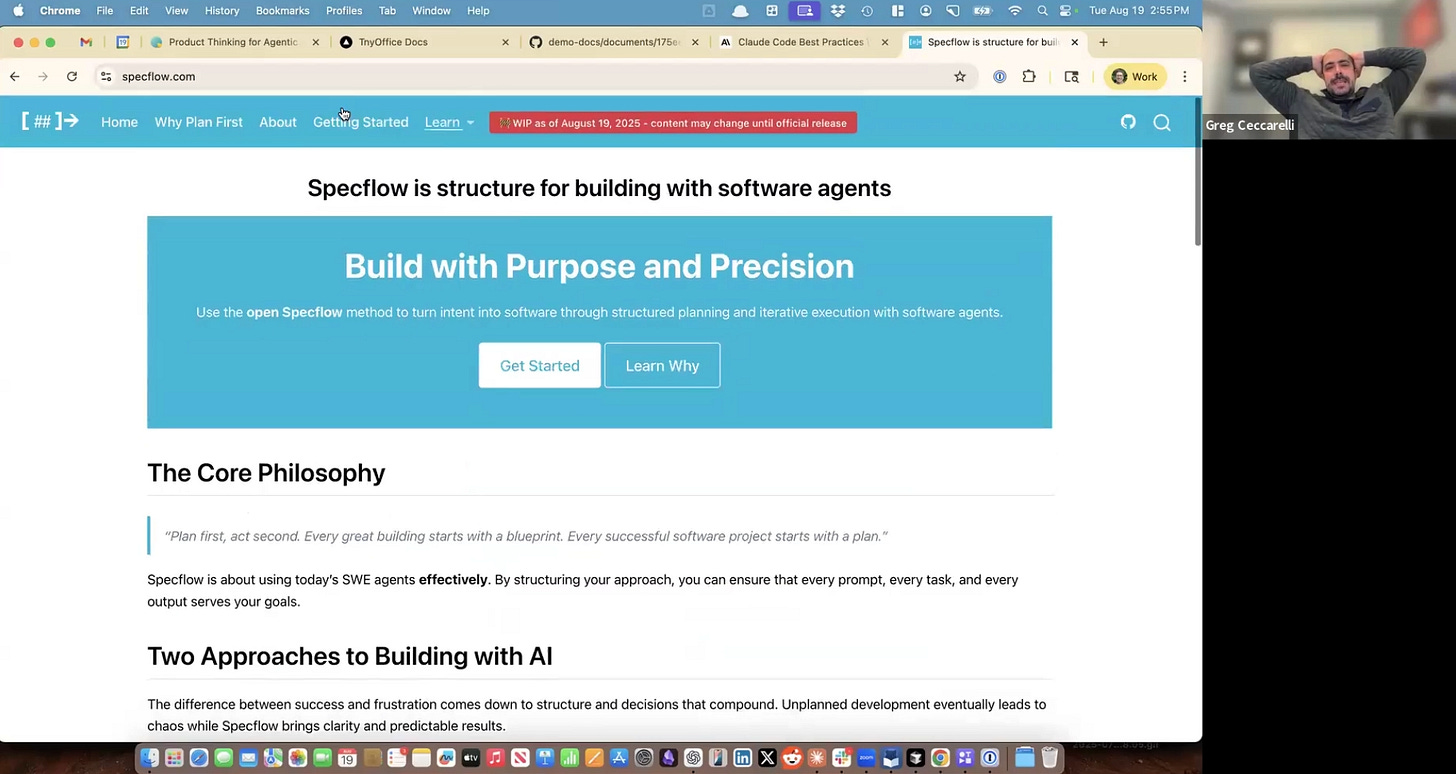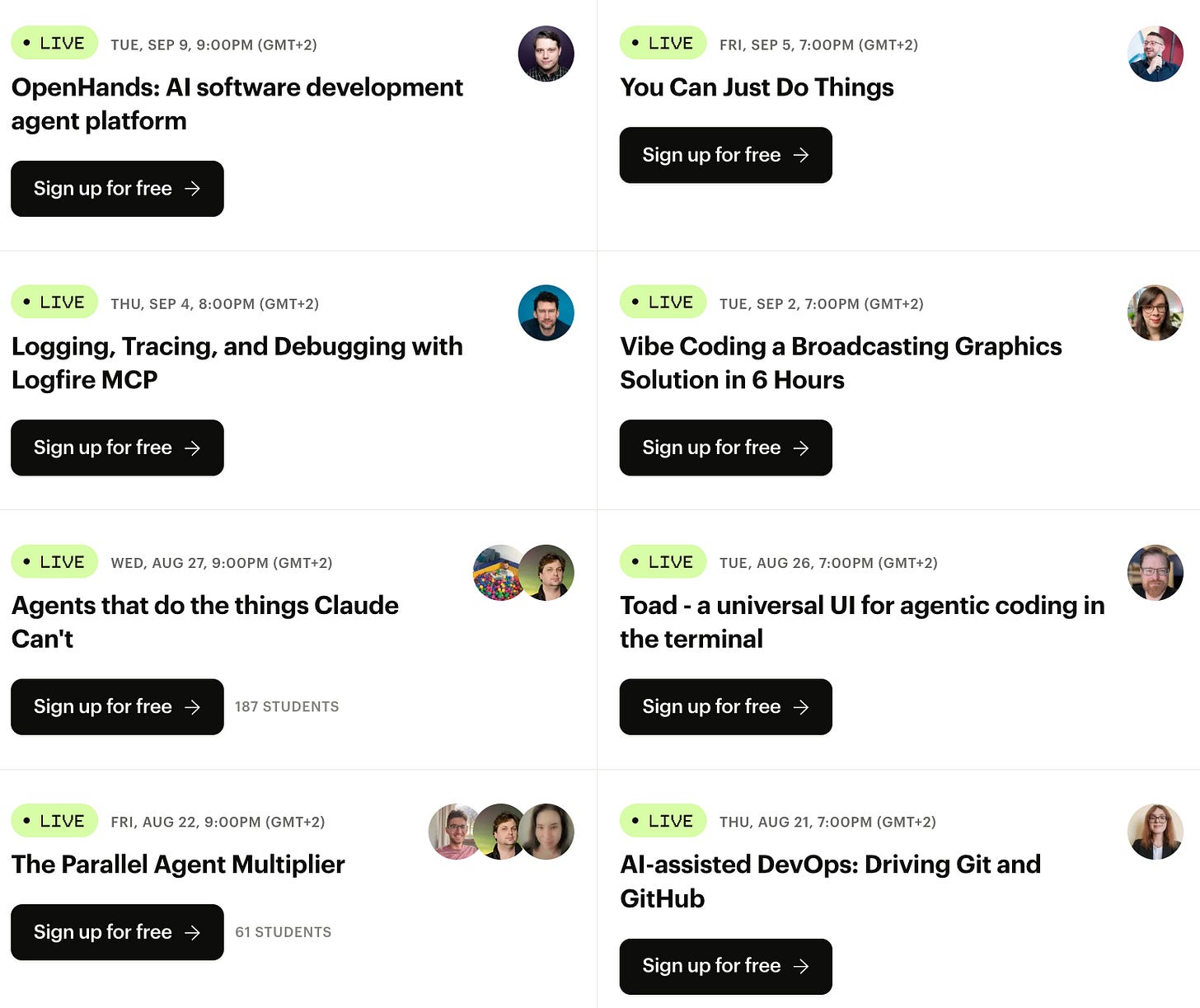Product Thinking for Agentic Development
A Spec-First Approach with Greg Ceccarelli and Jake Levirne from SpecStory
The New Reality of Infinite Building Capacity
Greg Ceccarelli and Jake Levirne from SpecStory presented a compelling framework for navigating the paradigm shift in software development. As Greg framed the central challenge: "We can build anything now, but should we?" With AI code generation tools approaching infinite capacity, the bottleneck has shifted from implementation to product thinking and specification.
The duo demonstrated their approach by showcasing real production applications they built entirely with AI agents — not as proofs of concept, but as working tools their startup actively uses. These included tny.dev (a link shortener replacement for bit.ly), a Typeform alternative for collecting customer responses, and a complete applicant tracking system that powers their careers page.
The SpecFlow Methodology
Jake and Greg introduced what they call SpecFlow — a systematic approach to working with AI agents that emphasizes upfront planning over iterative prompting. The methodology follows a clear progression:
Brainstorm — Get ideas out in their raw form
Create an initial plan — Structure thoughts into actionable specifications
Break down into tasks — Create discrete, agent-executable steps
Implement and iterate — Execute with continuous refinement
As Jake emphasized during the demo: "Rather than just trying to prompt our way through all of these steps, we're doing essentially a little bit of meta-prompting in order to get better and cleaner context to feed in for the actual implementation stage."
Product Thinking Remains Essential
Despite the technological leap, Greg stressed that fundamental product principles still apply — perhaps even more critically now. For their tny.dev link shortener, they asked themselves key questions:
Is it better than existing solutions? Yes — it was API-centric and optimized for cursor integration
Does it have an opinion? Yes — deliberately focused on programmatic use over manual forms
Can you explain it in one sentence? "It's link shortening for Cursor"
They also applied the Jobs-to-be-Done framework rigorously. As Greg explained about moving away from bit.ly: "We were building tons of content as part of our go-to-market distribution strategy. And so we have a ton of links that we need to shorten."
Live Demo: Building a Bulletizer Feature
The heart of the presentation was Jake's live demonstration of adding a "bulletizer" feature to their TinyOffice collaborative Markdown editor. Starting from a simple brainstorm — "I need to drop any content and get three to five clear bullets" — Jake walked through the entire SpecFlow process.
The demonstration revealed several critical insights:
Context Loading Matters
Before starting implementation, Jake primed Claude Code with relevant context: "Tell me how this app lets me add text to the current document." This wasn't to create anything — it was purely to establish the right mental model for the agent.
Specification Precision Pays Off
Jake meticulously refined the spec, specifying:
The app's purpose ("for teams to let them edit and collaborate on Markdown")
Form factor ("web app")
Fidelity level ("prototype")
Scope ("something that can be done in an hour or two")
Technology choices (using OpenAI's API for bullet extraction)
Curation Cannot Be Skipped
"I didn't just blast through. I didn't just say take the output as is. I was editing it. This is actually an important part, right? Curation, editing, refinement. Otherwise, you're just accepting whatever you get."
The bulletizer feature worked on the first implementation attempt — a testament to the power of proper specification.
Managing Code Quality with AI Agents
Eleanor raised a crucial question about over-engineering: "When I look at the code, I'm like, whoa, I would have never written this code because it's like five times longer than what I would have done."
Jake's response revealed a nuanced approach:
First, determine if code quality matters — For throwaway prototypes, it might not. For production systems, it absolutely does.
Use automated review processes — SpecStory's CTO created a Cursor command that "essentially simulates a line-by-line code review using the heuristics that he would use for a given project."
Develop emotional detachment when appropriate — As Eleanor noted: "If it works and you're going to throw it away or have a next version or it is just a prototype, then you need to kind of develop this emotional detachment from the code."
The Importance of Conversation Preservation
A recurring theme was the value of preserving AI agent interactions. SpecStory's own tool saves every conversation, enabling several critical capabilities:
Knowledge transfer — New team members or agents can load historical context
Code review discussions — Understanding why certain decisions were made becomes crucial when engineers can now write "4,000 lines instead of 150-200 lines of clean code a day"
Pattern extraction — Mining thousands of hours of agent interactions for successful prompting patterns
As Eleanor enthusiastically endorsed after using the tool: "I installed it and like a few hours later I was like how did I ever work without this... all the data you generate, the conversations, the sort of iteratively refined understanding of what you do. This is a goldmine."
Key Takeaways for Practitioners
The presentation offered several immediately actionable insights:
On Writing Specifications
Greg's advice for writing effective specs emphasized voice-first brainstorming: "Use your voice as the sort of highest throughput transfer mechanism to get like your idea out and like let it be messy." From there, use LLMs to shape the raw ideas into structured specifications with clear goals, tasks, and constraints.
On Technology Choices
Jake revealed his research process for selecting the CodeMirror editor: "One of my favorite Markdown editors is Obsidian. And so I just had a bunch of back and forth conversations with Claude and ChatGPT asking what the underlying libraries are within Obsidian markdown editing."
On Working Modes
The distinction between persistent sessions versus rule files proved important. As Greg noted: "If you keep a persistent session for long enough... you don't necessarily have to have those rules." The choice depends on whether you're frequently switching contexts or diving deep into a single feature.
The Future of Spec-Driven Development
Brooks from the audience asked a provocative question: Could you eventually "just give somebody these plans, they could run it on their instance of Claude Code and basically build the app rather than having to download the code?"
Jake's response revealed the ambitious vision behind SpecStory: "That is the premise upon which we started the company." While acknowledging that current best practices require both code and specifications, they believe the industry is moving toward a future where specifications alone could generate entire applications.
For now, as Jake pragmatically noted: "The best projects, the ones that are easiest to pick up and keep running with are ones that have both the code, for example, open source, and the specs, open intent."
Conclusion
Greg and Jake's presentation offered a masterclass in working with AI agents for real production systems. Their spec-first methodology — combined with rigorous product thinking and systematic conversation preservation — demonstrates a mature approach to AI-assisted development that goes far beyond simple prompt engineering. As the field evolves rapidly, their emphasis on maintaining engineering discipline while embracing new capabilities provides a valuable framework for teams navigating this transition.
The success of their approach is evident not just in their demo, but in the production systems they've built and deployed. As they continue to push boundaries, their work suggests that the future of software development lies not in choosing between human judgment and AI capability, but in thoughtfully orchestrating both through well-crafted specifications.
👉 Get the slides and the git repo for the talk.
👉 Visit SpecStory for the IDE extension, BearClaude and other spec-first solutions.
👉 Visit SpecFlow to learn about the framework.
👉 Visit tny.dev for a URL shortener you can drive from your MCP client.
👉 More upcoming Lightning Talks at Elite AI Assisted Coding on Maven


